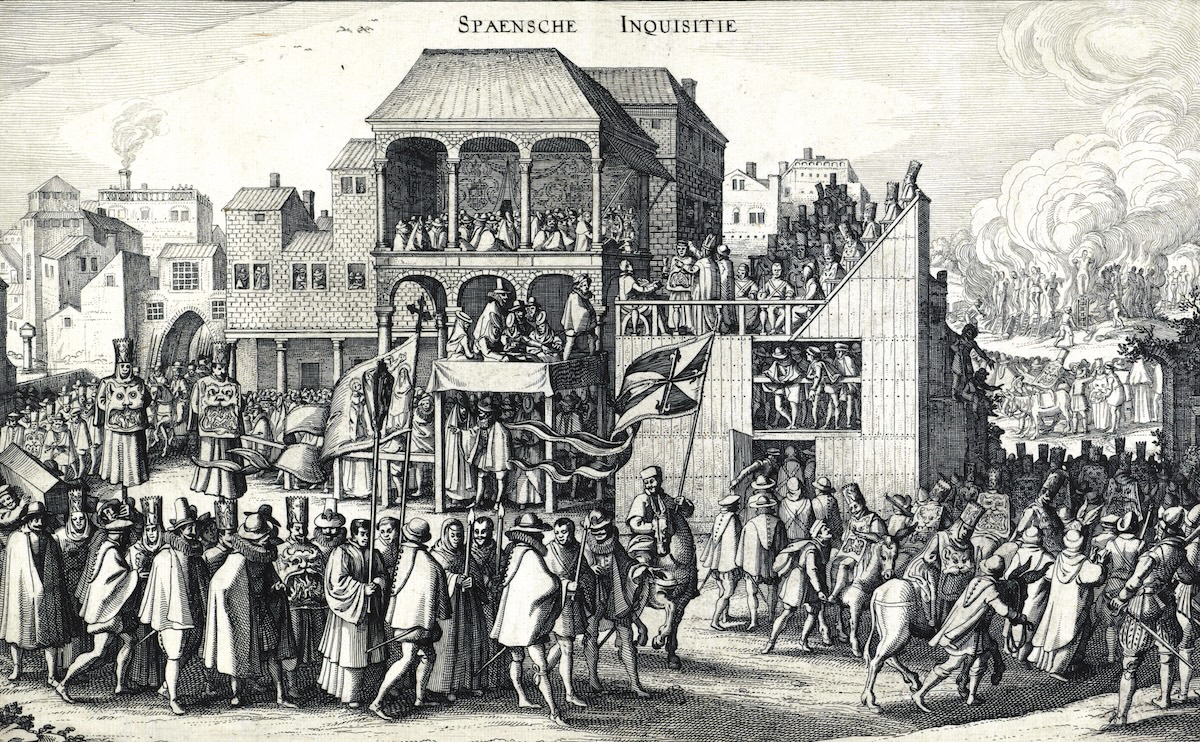The Ballad of the Inquisition’s Greatest Witch Trial
How a lost ballad detailing the Inquisition’s sentencing of 28 alleged Basque witches spread a witchcraft panic through 17th-century Spain.

Like all legal institutions, the Spanish Inquisition recognised that justice needed not only to be done but also to be seen to be done. Its public judgments were solemn occasions, as befitted a religious body concerned with the salvation of souls. An auto de fe, or ‘act of faith’, was, in part, a religious procession, possibly designed to mimic the Last Judgement. Autos emphasised penance and reconciliation; many first offenders escaped death by publicly confessing their crimes. This show of mercy was intentionally humiliating. Penitents were forced to wear sambenitos, special garments, which, upon completion of their sentences, would be hung in the parish church to remind them, their offspring and their communities of their crimes.
